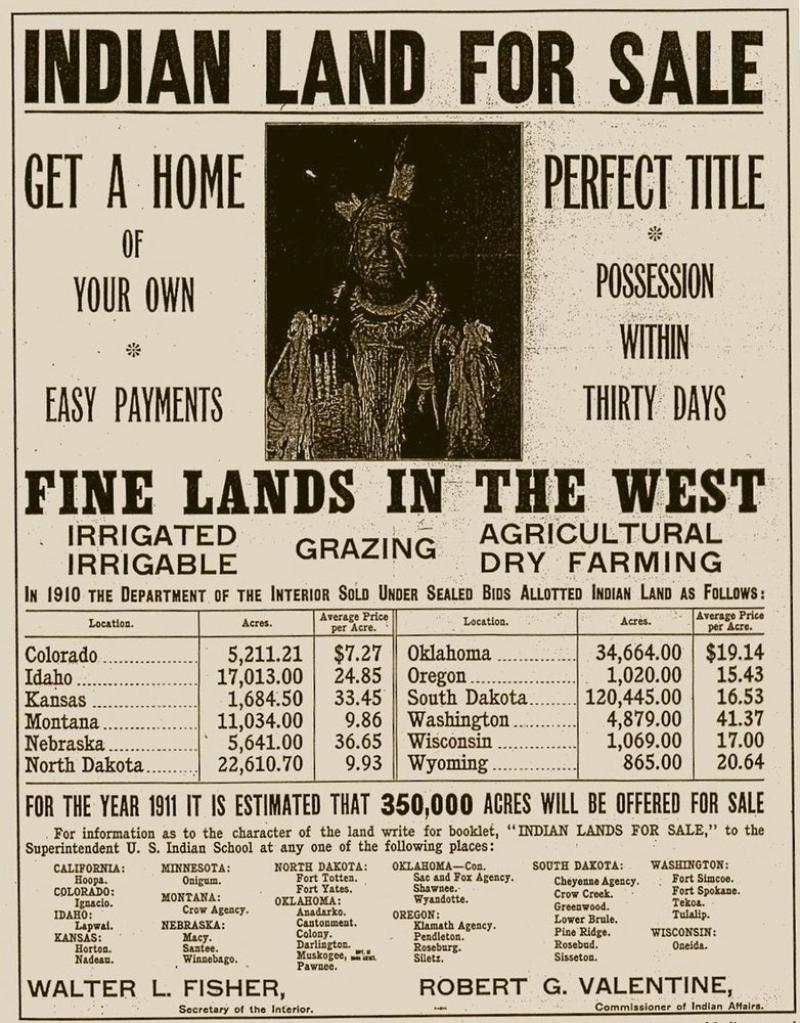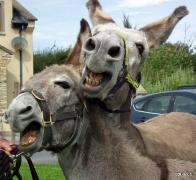American Bar Association Considers Land Buy-Back Program -
By: Jenna Kunze (Native News Online)



Details By Jenna Kunze February 17, 2022
The American Bar Association earlier this month hosted a conference, highlighting different tribal, federal and private agencies working to restore ancestral Native lands to tribal nations.
The one-hour session speakers included: Carolyn Drouin, an advisor for Tribal Relations with the U.S. Department of the Interior's Land Buy-Back Program for Tribal Nations; Chris Stainbrook (Oglala Lakota), president of the grassroots organization working to help recover and manage reservation lands, the Indian Land Tenure Foundation; and Koko Hufford, land project manager and enrolled tribal member at the Confederated Tribe of the Umatilla Indian Reservation. The panel was moderated by lawyer Kathy Kinsman, whose legal experience includes Indian Law. Kinsman also co-chairs the American Bar Association's Native American Law Committee.
Initially, most tribal nations ceded large swaths of their land in binding treaties with the US government, in exchange for certain protections and sovereignty. The government disregarded or reneged on most of those early agreements, and split up reservation land in the 1887 General Allotment Act. The Allotment Act, passed by Congress exactly 135 years ago this month, divided up reservation lands into individually-owned parcels and forcibly sold the remaining "surplus" land to non-Native homesteaders. As a result of the allotment policy, more than half of the land on Native American reservations in the U.S. is privately owned and controlled by non-Natives. The lost land equates to 90 million acres.
Several Native Nations, in partnership with the Indian Land Tenure Foundation, have been working to get ancestral lands back into tribal hands for more than two decades. Buying back Indian land is complex that involves the Department of the Interior, Indian Affairs, tribes, and sometimes tribal citizens.
The Indian Land Tenure Foundation, led by Stainbrook, started their work in 2003 by helping tribal members write wills and organize estates to ensure Native land is kept in Native hands.
"Ultimately, the goal is to get that 90 million acre back in Indian ownership, management (and) control, plus those sites outside of the reservation that are important for cultural purposes to the tribes," Stainbrook said on Thursday. "Over the years, we've recovered roughly 100,000 acres…and by the end of March, we should have another 50,000 acres recovered."
For the federal government's part, The Department of the Interior in 2013 began the Buy-Back Program, aimed at consolidating Native lands from "fractionation" over a ten-year period with almost $2 billion. That period ends this November. The Buy-Back Program was created to implement the land consolidation component of the Cobell Settlement, which provided $1.9 billion to purchase fractionated interests in trust or restricted land from willing landowners. Consolidated interests are transferred to tribal government ownership for uses benefiting the reservation community and tribal members.
Fractionation, Drouin explained, is the result of the policy of breaking up tribal homelands into individual allotments or tracts and then dividing its ownership among more and more owners after the death of the original owner.
"On average, each tract has 25 owners," Drouin said. "We've seen some tracts that have in the hundreds and even some tracts that have thousands of landowners."
Native News Online founder Levi Rickert said that, around 2013, the Department of the Interior was getting multiple family members who were claiming a stake in the land after their relatives died.
Fractionation makes it harder for an individual person or a tribe to pursue economic development opportunities and infrastructure projects on lands when there are hundreds of people that need to be involved in making a decision, she said.
So far the Buy-Back program has consolidated over 1 million fractional ownerships (not necessarily full acres) which has resulted in 2.9 million equivalent acres transferred to tribes and trust, Drouin said.
As a result, landowners and tribes have reported an improved ability to pay off debt and utilize the land for economic growth.
"The Oglala Sioux Tribe is collaborating with USDA to develop agricultural improvements including the creation of more reliable sources for livestock," Drouin said. She added that the Makah Tribe used its consolidated land to build a recreational facility and cabins to generate further income for the tribe.
Hufford, who works in her tribe's land department in Oregon, said the Umatilla Indian Reservation has used funds from its tribal farming enterprise to buy back land lost during the allotment period.
"Now we own about 100,000 acres of our own property," Hufford said. "One thing is, we couldn't have done this without our partners. I could talk badly about the Department of Interior and the BIA, but they had to be our partners. We had to work with them to make it happen."
More Stories Like This
Five Buffalo Returned to Lipan Apache Lands
Keeseekoose First Nation: More Unmarked Graves of Residential School Victims Found
Graves Protection Act Often Comes Up Short of Serving Indigenous People, Hearing Witnesses Say
Land Returned to Consortium of 10 Tribes
DonateFree Newsletter About The Author Author:Jenna KunzeEmail:This email address is being protected from spambots. You need JavaScript enabled to view it. Staff Writer Jenna Kunze is a reporter for Native News Online and Tribal Business News. Her bylines have appeared in The Arctic Sounder, High Country News, Indian Country Today, Smithsonian Magazine and Anchorage Daily News. In 2020, she was one of 16 U.S. journalists selected by the Pulitzer Center to report on the effects of climate change in the Alaskan Arctic region. Prior to that, she served as lead reporter at the Chilkat Valley News in Haines, Alaska. Kunze is based in New York.

Tags
Who is online
459 visitors


Trolling, taunting, and off-topic comments may be removed at the discretion of group mods. NT members that vote up their own comments or continue to disrupt the conversation risk having all of their comments deleted. please remember to quote the person(s) to whom you are replying to preserve the continuity of this seed.
Recently 11,760 acres were returned to the Leech Lake Ojibwe Nation of Minnesota. The land was taken illegally between 1948 and 1959. It has taken the US government over 60 years to finally return the land.
the gov't probably had to wait until all the pale faces that were involved in that theft were dead.
This one hit close to home since some of our friends were pushed out of their homes as the feds took over the land.
This is a very good article on the tiny tribe that got back over 1,000 acres and by whom and why they do not want federal recognition (I can agree with their reasoning).
That is one of the major hang-ups - getting BIA to place the properties into Trust lands.
That certainly is true, but in the case of this tribe they do not want federal recognition since the land would be put into trust and they do not want the US to tell them what they can and can't do with the. I don't blame them for that at all. That, or course leads to why does the land go into trust and to whose advantage is. We both know the answer but I'm sure that 95% of NT have no idea why.
That would be an interesting quiz for NT members dontcha think?
Progress is being made. Good!
Slowly but progress is being made.
These buybacks are a real game changer. Hopefully, there will be more to come. Any progress is good progress and will benefit tribes in the future.
buy back land stolen from us...Amazing isn't it.
Some of the conservation foundations are returning land as well. A month or so ago one returned 1,000 acres of Redwoods in CA to the local tribe.